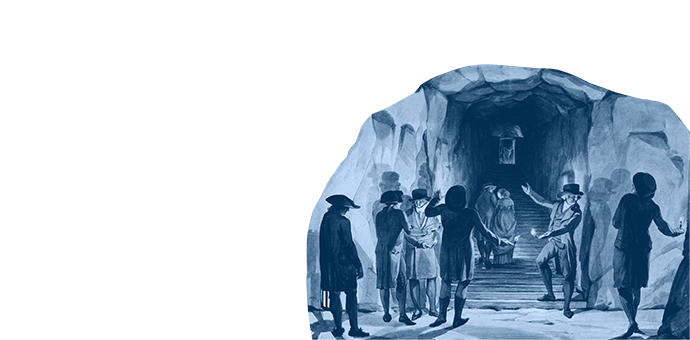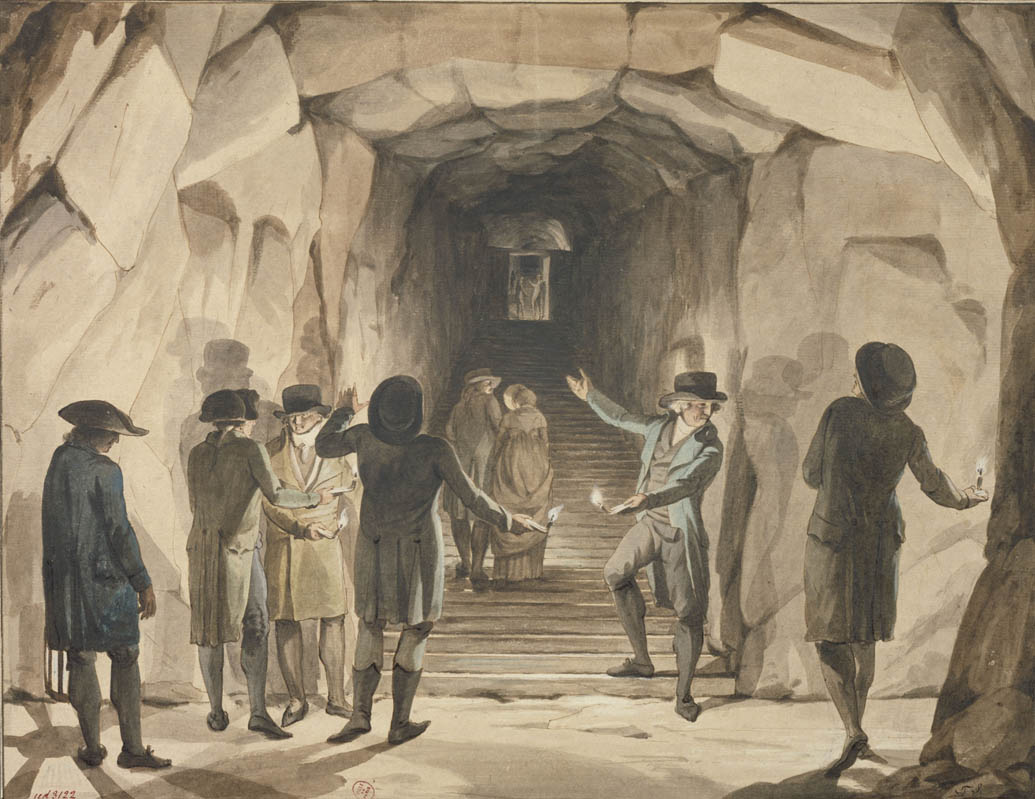The Catacombs neighborhood
Underneath the Place Denfert-Rochereau, several million carefully arranged bones provide a bizarre spectacle. Starting in the mid-1780s, the contents from former Parisian cemeteries, as well as, most likely, the bones of men and women who died during the Revolution were transferred here. Open to the public since 1809, the ossuary of Paris is more familiarly known as the “Catacombs” in reference to the catacombs of Rome. On the surface, two large buildings date from the end of the 18th century: these are the toll pavilions from the Barrière d’Enfer (Hell’s Gate). These pavilions were part of the larger Farmers General wall, which surrounded the city in 1789 in order to tax merchandise entering the city more efficiently. Not far from here, the Paris Observatory is a testimony to a revolutionary utopia: using science in order to build a better world.

 Chronology
Chronology
-
July 16, 1789
An insurgent mob goes to the Paris Observatory looking for weapons and gunpowder -
1786
Consecration of Paris’s municipal ossuary in the former Tombe-Issoire quarries -
1787
The Count d’Artois, brother of Louis XVI, visits the Paris ossuary -
May 1, 1791
The neighborhood’s inhabitants celebrate the removal of the Parisian tollgates at Hell’s gate -
June 18, 1792
Bones from the Saint-Landry church’s cemetery are transferred to the Catacombs -
1795
The Paris Observatory oversees the roll out of the metric system throughout France -
1809
Paris’s municipal ossuary is opened to the public





